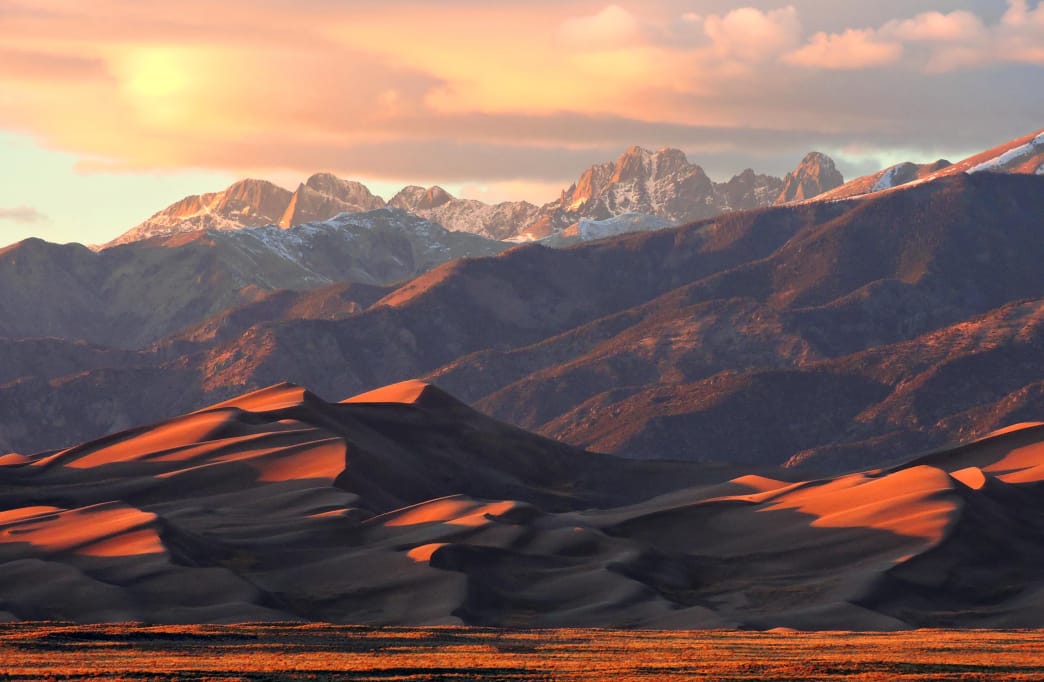Reaching a height of 750 feet, the sand dunes in Colorado’s San Luis Valley are the largest dunes in North America, and they attract thousands of travelers each year. But, something equally impressive lies beyond these mountains of sand. Looking like massive shark teeth, a collection of ten 14,000-foot peaks pierce the sky and tower over the valley. These mountains in the Sangre de Cristo Range not only provide a dramatic backdrop to Great Sand Dunes National Park and Preserve, but they also offer the chance to experience amazing hikes and other adventures beyond the park’s boundaries.
Outside of the park, you’ll not only encounter rugged mountains, but also several other ecosystems, including wetlands, grasslands, and the Riparian area where cottonwoods, aspens, and alders thrive along lively creeks.
With such a rich landscape surrounding the park, there’s plenty do after you’ve slid down the dunes, like hiking to waterfalls, fishing, biking, and viewing bison. Before you head to the sand dunes or the surrounding area, check out these eight amazing things to experience beyond the boundaries of the national park.
Continue Reading

Valentine's Day is right around the corner, and if you're still looking for something romantic to do with your Valentine, we've compiled some of Alamosa's most dreamy attractions. No matter what your Valentine's interests are, the perfect date is waiting for you!
Continue Reading

Great Sand Dunes National Park & Preserve is home to the tallest dunes in North America, topping out at around 755 feet. These ever-shifting hills and mounds sit west of the Sangre de Cristo Mountains, creating a mind-boggling, desert-like landscape surrounded by 14,000-foot snow-capped peaks. Compared to most of Colorado’s mountains, the Sangres are extremely rugged, due to the earth’s sudden upheaval that created their relief. The landscape here is one of the most stunning scenes in the entire country.
The dunes are also surrounded by a variety of environments, including grasslands, wetlands, aspen forests, and alpine lakes. Nearby, a grove of 200 ponderosa pine trees, which is listed on the National Register of Historic Places, was historically peeled by indigenous tribes for food and medicine.
From the best ways to explore the dunes to where to stay when visiting the area, here are 10 things you should keep in mind to make the most of your trip.
Continue Reading















